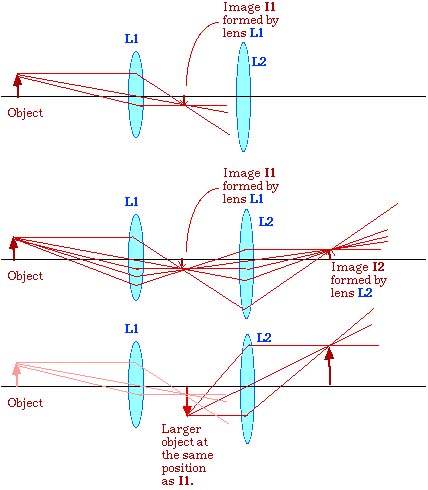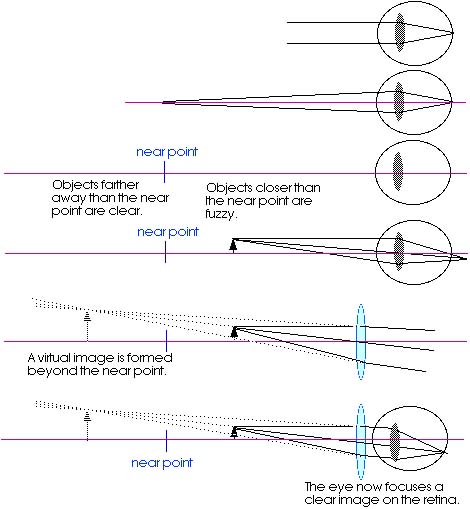|
|

|
|


Corrective lenses-whether contact lenses or common eyeglasses-produce
a virtual image in a region that the eye can focus upon to produce
a clear image on the retina. Let us begin with a nearsighted or
myopic eye, such as the one in Figure 19.9 or Figure 19.12. Such
an eye can see objects clearly out to some distance, known as
the far point. Beyond the far point, this myopic eye is unable
to focus a clear image on the retina. A corrective lens produces
an image located closer than the far point and the eye, using
this image as if it were an actual object, then focuses a clear
image on the retina. This is illustrated in Figure 19.12. The
type of corrective lens needed is called a negative lens or a
diverging lens; it is thicker at the edges and thinner in the
middle.




Now we consider a farsighted or hyperopic eye, such as the one
in Figure 19.10 or Figure 19.13. Such an eye can see objects clearly
if they are farther away than a certain distance known as the
near point. Closer than the near point, this hyperopic eye is
unable to focus a clear image on the retina. A corrective lens
produces an image located farther away than the near point and
the eye, using this image as if it were an actual object, then
focuses a clear image on the retina. This is illustrated in Figure
19.13. The type of corrective lens needed is called a positive
lens or a converging lens; it is thinner at the edges and thicker
in the middle.


|
|